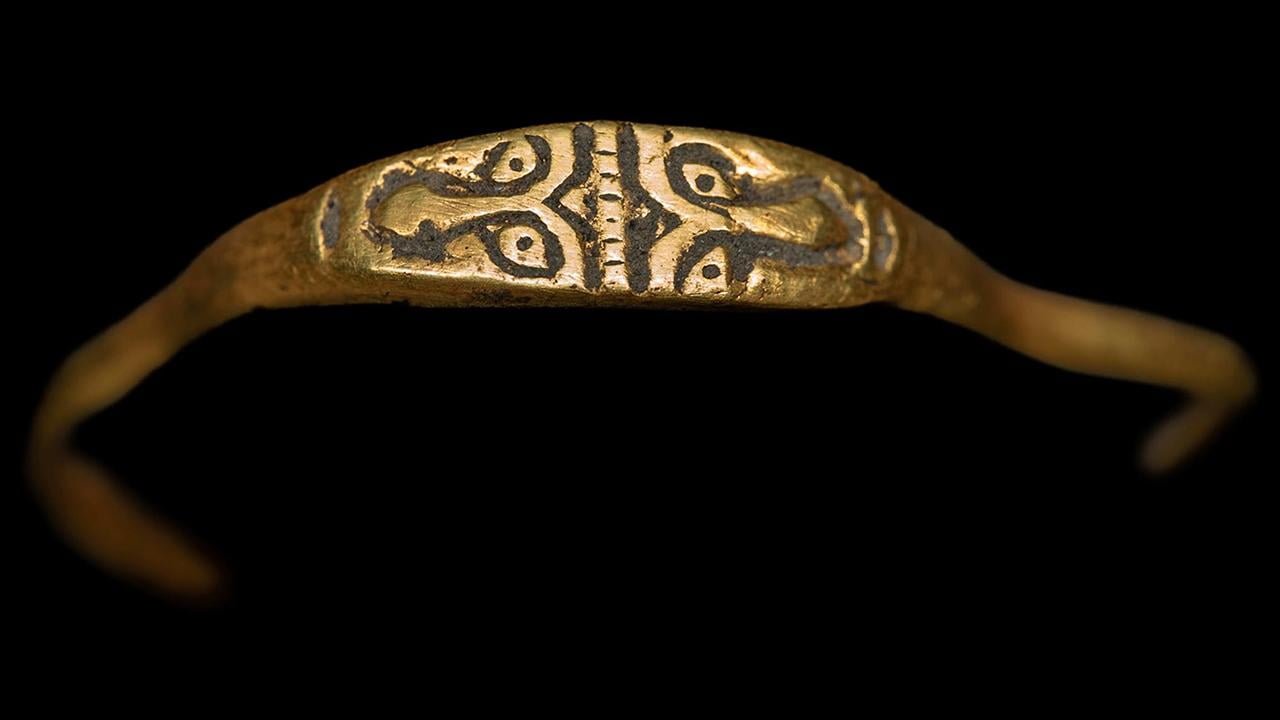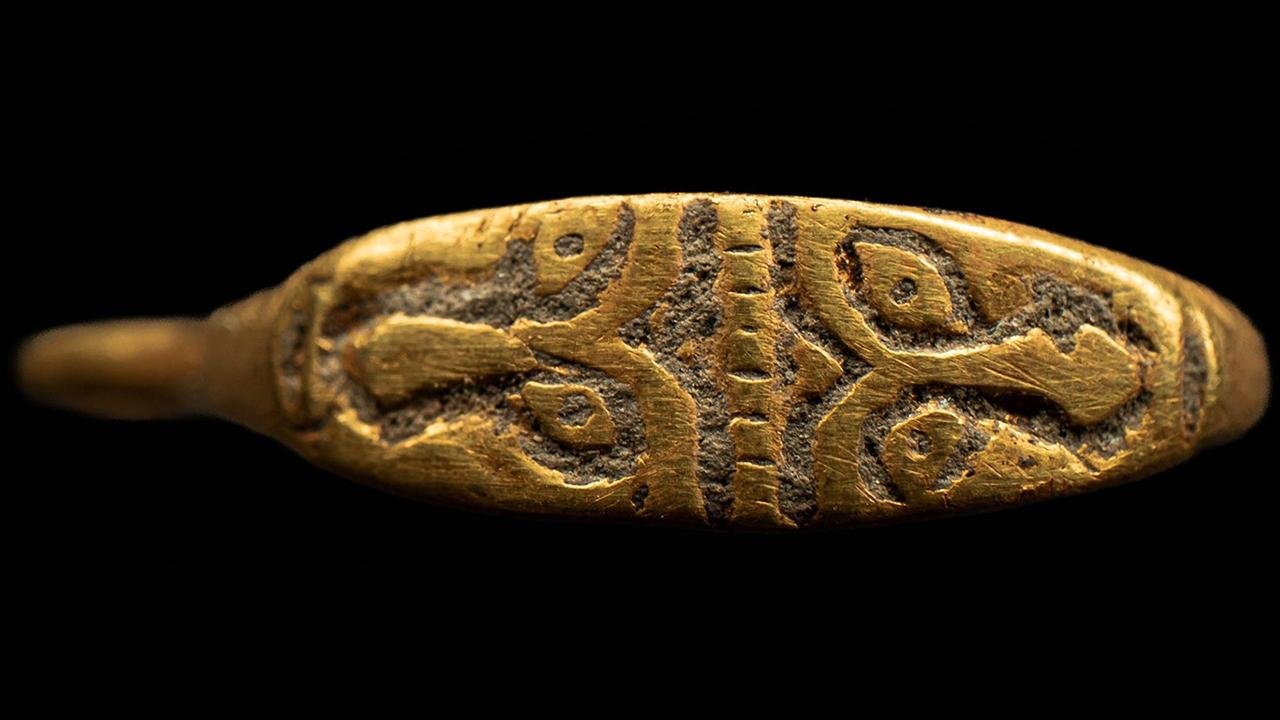Researchers have discovered an exceptionally rare medieval gold ring with a distinctive two-faced design, believed to have originated from the 11th or 12th century, beneath Wawel Royal Castle in Kraków, Poland. The discovery, made during ongoing investigations by researcher Jerzy Trzebiński, marks the first of its kind found on Polish territory.

The gold ring is intricately decorated with two opposing anthropomorphic faces engraved on a shield. This elaborate ornamentation sets it apart from other early medieval gold rings discovered in Poland, which typically lack such intricate designs or are adorned with simple geometric patterns.
Notably, the imagery on the ring does not conform to the Christian symbolism prevalent in artifacts of that era, suggesting a departure towards Roman mythology, particularly referencing Janus, the two-faced god symbolizing transitions and beginnings.
Trzebiński said: “This is the only example in which human images (or figural ones in general) are depicted on an early medieval ring from Poland.” The absence of Christian references further distinguishes the artifact, hinting at its possible connection to pre-Christian beliefs and practices prevalent in the region.

The discovery occurred within the confines of the castle’s Danish Tower, one of its four residential towers, constructed under the orders of King Władysław II Jagiełło in the late 14th to early 15th century. The ring was found atop the remains of a former stone structure, likely a defensive rampart, underscoring the strategic importance of Wawel Castle throughout history.
Believed to have been produced locally, the ring’s craftsmanship and style align with the typical aesthetic of the Polish region during the medieval period. Trzebiński suggests that it may have belonged to a member of the elite under the Piast dynasty, which ruled Poland from its inception in the 10th century until the 14th century.

Once the metal analysis is conducted, it may provide more data about the composition and origin of the gold within the ring. Following the completion of scientific research, the ring is slated to be put on display.


































